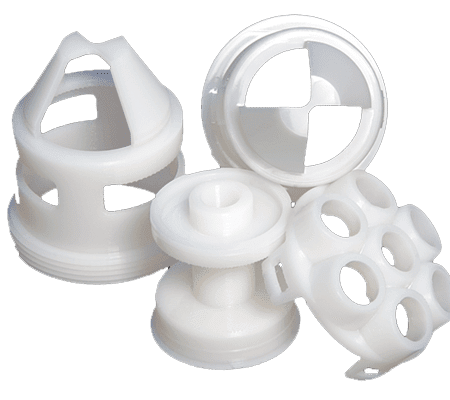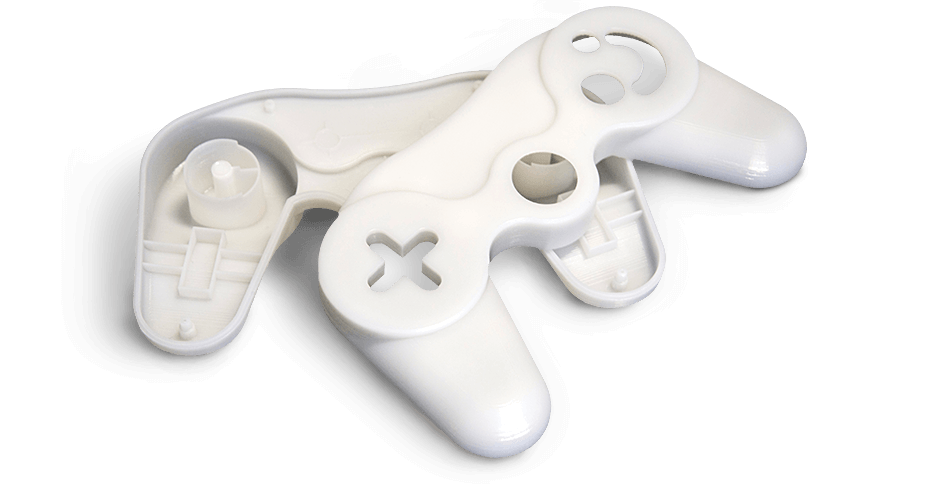
ABS-Like Parts Without Molding Or Machining
Replace CNC-machined white ABS with strong and rigid plastic built for short-run production parts.
Material Performance

Impact
Strength
12-22 J/m

Heat Deflection
Temperature
55-58°C @ 66 PSI
51-53°C @ 264 PSI

Flexural
Strength
88-110 MPa

Tensile
Strength
63-68 MPa
Material Highlights
Features
- Rigid and tough
- Simulates the aesthetic of ABS
- High production speed
- High accuracy with less distortion
Uses
- Short-run production parts
- Interior automotive components
- Testing of functional assemblies
- Concept and marketing models
Performance Scale
![]()
![]()
![]()
![]()
Material Colours

Technical Specifications
| Post-Cured Material | Test Method | Metric | U.S. |
| Tensile Strength (MPa/PSI) |
ASTM D638 | 63-68 | 9200-9850 |
| Tensile Modulus (MPa/KSI) |
ASTM D638 | 3200-3380 | 460-490 |
| Elongation at Break (%) | ASTM D638 | 5-8 | 5-8 |
| Flexural Strength (MPa/PSI) |
ASTM D790 | 88-110 | 12830-15920 |
| Flexural Modulus (MPa/KSI) |
ASTM D790 | 2690-3240 | 390-470 |
| Impact Strength (J/m /Ft-lbs/in) |
ASTM D256 | 12-22 | 0.2-0.4 |
| Heat Deflection Temperature |
ASTM D 648 @ 66 PSI @ 264 PSI |
55-58 °C 51-53 °C |
131-136 °F 123-127 °F |
| Glass Transition (Tg) | DMA, E” | 56 °C | 132 °F |
| Coefficient of Thermal Expansion (CTE) |
ASTM E 831-93 TMA (T<Tg, 0-40 °C) TMA (T<Tg, 75-140 °C |
61 163 |
141 326 |
| Hardness, Shore D | 85 | 85 |
| Liquid Material | Test Method | Value |
| Viscosity | @ 30 °C (86 °F) | 155-185 cps |
| Penetration Depth (Dp) | 5.2 mils | |
| Critical Exposure (Ec) | 7.4 mJ/cm2 | |
| Colour | White | |
| Solid Density | @ 25 °C (77 °F) | 1.20 g/cm3 |
| Liquid Density | @ 25 °C (82 °F) | 1.13 g/cm3 |
